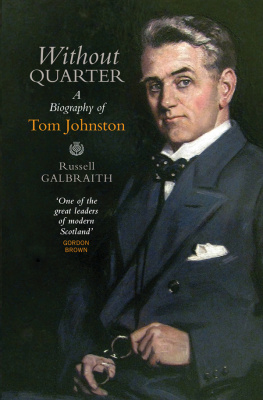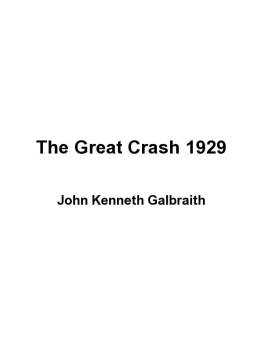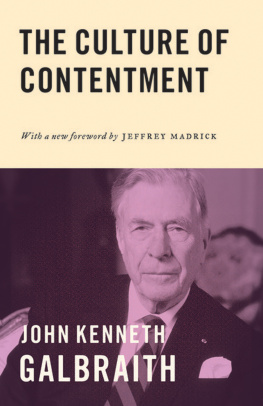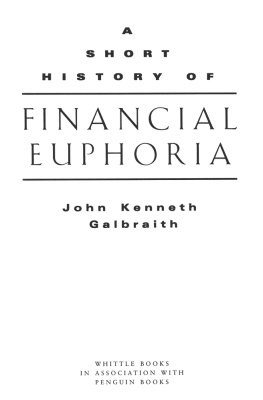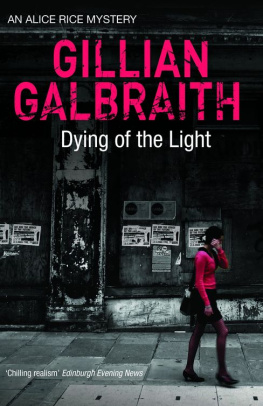Steven K. Galbraith - A Brief History of the Book
Here you can read online Steven K. Galbraith - A Brief History of the Book full text of the book (entire story) in english for free. Download pdf and epub, get meaning, cover and reviews about this ebook. publisher: ABC-CLIO, genre: Children. Description of the work, (preface) as well as reviews are available. Best literature library LitArk.com created for fans of good reading and offers a wide selection of genres:
Romance novel
Science fiction
Adventure
Detective
Science
History
Home and family
Prose
Art
Politics
Computer
Non-fiction
Religion
Business
Children
Humor
Choose a favorite category and find really read worthwhile books. Enjoy immersion in the world of imagination, feel the emotions of the characters or learn something new for yourself, make an fascinating discovery.

- Book:A Brief History of the Book
- Author:
- Publisher:ABC-CLIO
- Genre:
- Rating:3 / 5
- Favourites:Add to favourites
- Your mark:
- 60
- 1
- 2
- 3
- 4
- 5
A Brief History of the Book: summary, description and annotation
We offer to read an annotation, description, summary or preface (depends on what the author of the book "A Brief History of the Book" wrote himself). If you haven't found the necessary information about the book — write in the comments, we will try to find it.
A Brief History of the Book — read online for free the complete book (whole text) full work
Below is the text of the book, divided by pages. System saving the place of the last page read, allows you to conveniently read the book "A Brief History of the Book" online for free, without having to search again every time where you left off. Put a bookmark, and you can go to the page where you finished reading at any time.
Font size:
Interval:
Bookmark:
A Brief History of the Book

From Tablet to Tablet
Steven K. Galbraith

Copyright 2020 by Steven K. Galbraith
All rights reserved. No part of this publication may be reproduced, stored in a retrieval system, or transmitted, in any form or by any means, electronic, mechanical, photocopying, recording, or otherwise, except for the inclusion of brief quotations in a review, without prior permission in writing from the publisher.
Library of Congress Cataloging-in-Publication Data
Names: Galbraith, Steven K., author.
Title: A brief history of the book : from tablet to tablet / Steven K. Galbraith.
Description: Santa Barbara, California : Libraries Unlimited, [2020] | Includes bibliographical references and index.
Identifiers: LCCN 2020014986 (print) | LCCN 2020014987 (ebook) | ISBN 9781440869396 (paperback ; acid-free paper) | ISBN 9781440869402 (ebook)
Subjects: LCSH: BooksHistory. | Writing materials and instrumentsHistory. | Written communicationHistory. | Pocket computers. | Electronic book readers. | BooksHistoryProblems, exercises, etc.
Classification: LCC Z4 .G25 2020 (print) | LCC Z4 (ebook) | DDC 002.09dc23
LC record available at https://lccn.loc.gov/2020014986
LC ebook record available at https://lccn.loc.gov/2020014987
ISBN:978-1-4408-6939-6 (paperback)
978-1-4408-6940-2 (ebook)
242322212012345
This book is also available as an eBook.
Libraries Unlimited
An Imprint of ABC-CLIO, LLC
ABC-CLIO, LLC
147 Castilian Drive
Santa Barbara, California 93117
www.abc-clio.com
This book is printed on acid-free paper 
Manufactured in the United States of America
Dedicated to the memory of John W. Ellison
Contents
Acknowledgments
A Brief History of the Book would not have been possible without the Cary Graphic Arts Collection at RIT and my wonderful work colleagues there: Amelia Fontanel, David Pankow, Shani Avni, Lauren Alberque, Gregory Decker, and Ella Von Holtum. Research for the book was facilitated by the resourceful and patient Morna Hilderbrand and the IDS Department of RITs Wallace Library. For their photography and design talents, I am indebted to Elizabeth Lamark, Blayke Morrow, Jiageng Lin, Marnie Soom, Jenna Nichols, Jordan Funk, and Amelia Fontanel (again!).
From Libraries Unlimited, I need to thank Barbara Ittner for encouraging me to get this book started and Emma Bailey for encouraging me to get it finished.
I want to thank my friend Chuck Bigelow for his words of encouragement.
Finally, I wish to thank my family: Jeannie, Audrey, Maddie, Jim, Diane, Annie, Cooper, Sam, John, Ginger, Jill, Andy, Lisa, Kamden, Noella, and Mary for all of their love and support.
Introduction
From ancient clay and wax tablets, to papyrus rolls, to medieval manuscript books, to printed books, and to tablet computers, books have taken a great variety of forms over the past five millennia.
As I write this introduction I have an iPhone in my pocket. Many of you reading this book probably have an iPhone or another smartphone nearby. According to the Pew Research Center, as of 2018, 77 percent of Americans own a smartphone.
When scholars present the history of the book, they might choose to focus on books in the form in which we know them bestthe codex. A codex, in its most basic form, are leaves of paper, or another substrate, gathered together and bound along the long edge so that it can be opened and closed and the pages can be turned. A textbook on the history of the book might start with European medieval manuscript books and work forward through the invention of Gutenbergs system of printing and beyond. Increasingly, however, history of the book courses are looking further back and taking a more global approach. A Brief History of the Book: From Tablet to Tablet begins with the tablets of the ancient world and then moves forward to the tablets of today. Tablet to tabletcuneiform to Kindle. In between are 5,000 years of the evolution of the book.
Throughout A Brief History of the Book , the term book will be used in its most inclusive way, expanding its definition to a variety of technologies that present texts and images to readers. This definition owes much to influential scholars in the field of the history of the book. D. F. McKenzie, He expanded the definition of texts to include all forms of texts, not merely books or signs on pieces of parchment or paper. In a similar fashion, A Brief History of the Book will approach books in a broader way that allows us to begin with the very first written communication and travel all the way to the very present.
Five thousand years in one brief book? How is this possible? It is not. A Brief History of the Book: From Tablet to Tablet is, as the title suggests, a brief history and not meant to be comprehensive. This book presents a chronology of some of the major forms that the book has taken, introducing the reader to many of the most important developments in the history of the book. Throughout that history, certain themes emerge that demonstrate how writing and reading technologies are a part of a long evolution, with one technology informing the nextold influencing the new (and occasionally the new influencing the old). Although the materials, texts, and readers change, the nature and use of these technologies have consistencies that have endured for over five millennia.
As a curator, I teach with artifacts. This approach extends to writing, as well. Throughout A Brief History of the Book , historical examples are provided from the Cary Graphic Arts Collection at Rochester Institute of Technology (RIT), where I serve as curator. Established in 1969 as a part of RITs School of Printing, our special collections library documents the history of graphic communication. Due to its foundational connections with RITs printing curriculum, the Cary Collection (for short) has a particularly strong focus on the history of the printed book. Over the decades of its relatively short existence, the library has sought to expand its scope, so our collection increasingly documents a more comprehensive history. Like most libraries in the United States and Europe that focus on the history of the book, the core of our collection reflects the Western tradition. In an effort to expand the scope to better exhibit a greater global history, the Cary Collection continues to diversify its holdings.
A Brief History of the Book is written for courses in fields such as library science, English literature, and history. It is a brief history that follows primarily the evolution from the cuneiform tablets of ancient Babylon and Sumer to todays digital tablets. Forms of the book presented along this evolution have been chosen both for their impact on this history and the accessibility of such objects for students for primary study. The artifacts presented are hopefully ones that can be seen and handled in collaboration with a local library, archive, or museum. Supporting a hands-on approach, A Brief History of the Book features exercises that can be achieved in most classrooms and are appropriate for students of all ages.
MODERN ADS FOR EARLY TECHNOLOGIES
As we examine each new technology in the history of the book, we will note important themes that carry through the history of the book from the ancient world all the way to the present, including: memory, readable/writable, recyclability, durability, security, cost, and style of access. To exemplify these themes in a modern, accessible manner, A Brief History of the Book: From Tablet to Tablet presents playful, modern advertisements for historical technologies. These ads are admittedly anachronistic and certainly a little silly, but they help in analyzing important themes, as well as similarities in technologies from ancient to modern.
Next pageFont size:
Interval:
Bookmark:
Similar books «A Brief History of the Book»
Look at similar books to A Brief History of the Book. We have selected literature similar in name and meaning in the hope of providing readers with more options to find new, interesting, not yet read works.
Discussion, reviews of the book A Brief History of the Book and just readers' own opinions. Leave your comments, write what you think about the work, its meaning or the main characters. Specify what exactly you liked and what you didn't like, and why you think so.

